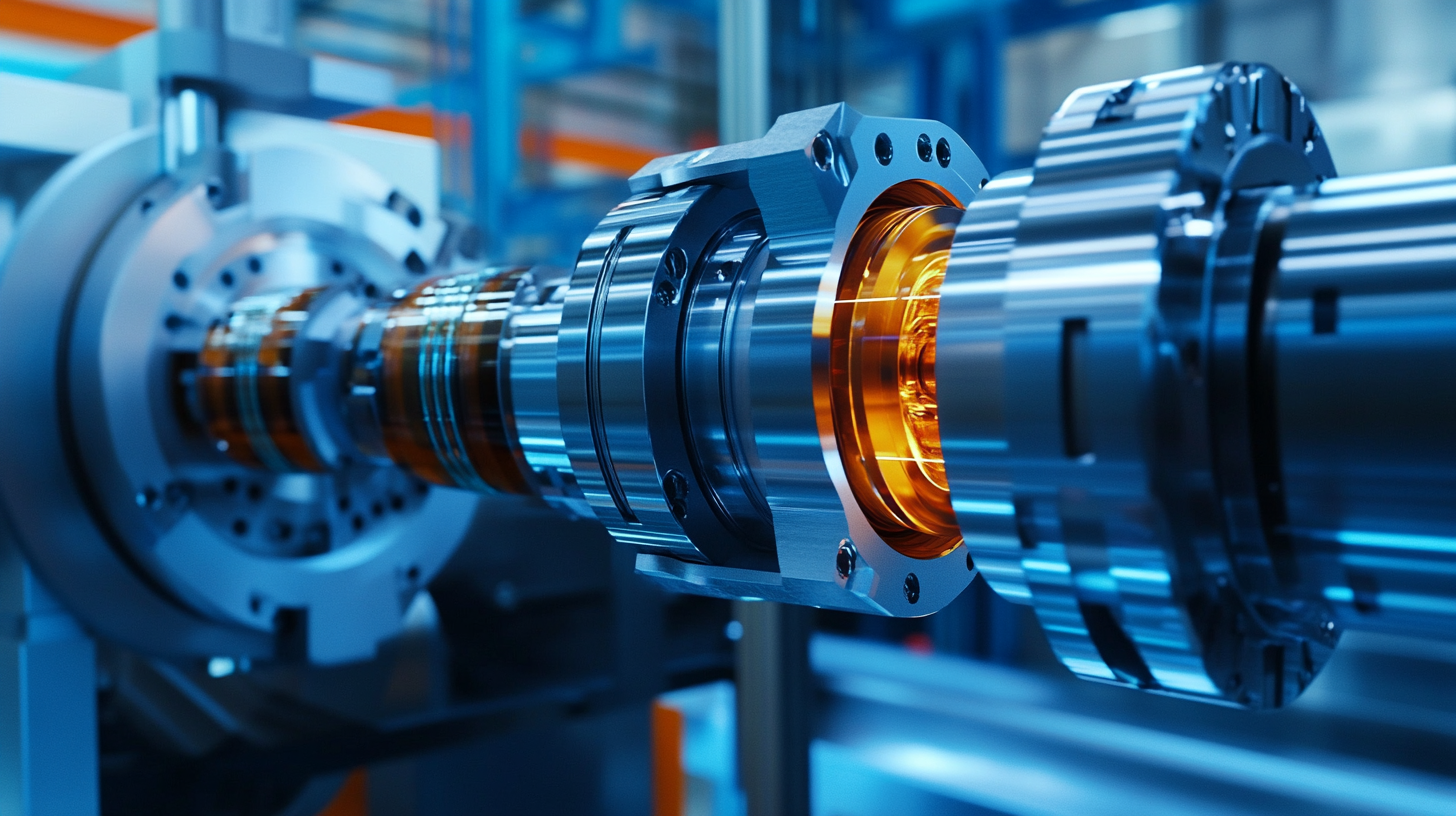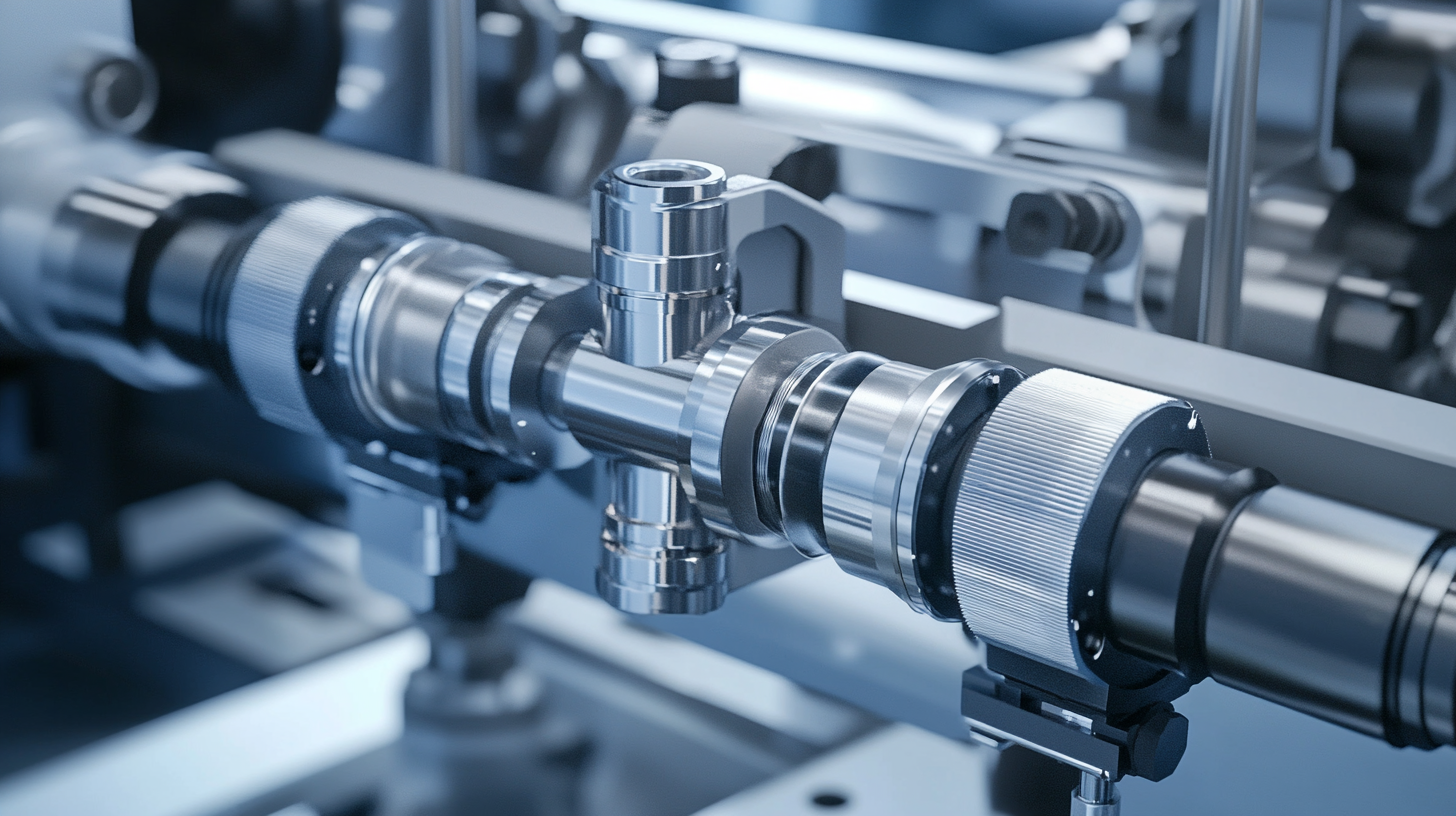Empowering Engineering Excellence: Innovate, Elevate, Deliver.
The ever-evolving landscape of hydraulic technology continues to underpin advancements in various industries, notably manufacturing, construction, and automotive sectors. Hydraulic pistons, as critical components in hydraulic systems, play a pivotal role in harnessing hydraulic energy for efficient power transmission. According to a recent report by MarketsandMarkets, the global hydraulic cylinder market is expected to grow from USD 12.78 billion in 2021 to USD 15.79 billion by 2026, at a compound annual growth rate (CAGR) of 4.42%. Such figures highlight the increasing demand for innovations in hydraulic pistons, which can streamline operations while enhancing performance and reducing equipment wear.
As the emphasis on energy efficiency and sustainability intensifies, the development of advanced hydraulic piston technologies is more important than ever. Industry experts indicate that the integration of smart technologies, such as IoT and AI, into hydraulic piston systems can lead to significant gains in efficiency—up to 30% in some cases. Moreover, the advent of new materials and design methodologies promises to further optimize the durability and effectiveness of hydraulic pistons. As we explore future innovations in this field, the potential for unlocking unprecedented efficiency and performance benefits beckons, setting the stage for a transformation of hydraulic systems across all applications.

The hydraulic piston technology is experiencing a remarkable transformation, driven by emerging trends in design and functionality that promise to unlock significant efficiency and performance benefits. With the introduction of advanced fault diagnosis techniques, such as 2D time-series modeling and self-attention mechanisms, engineers can now identify and rectify hydraulic system issues with unprecedented precision. This innovation not only enhances safety and reliability in hydraulic applications but also contributes to the overall efficiency of hydraulic piston systems. Moreover, the upcoming bauma 2025 expo will showcase the latest advancements in hydraulic technology, where leading companies will present their innovations designed to meet the ever-increasing demands of the industry. These innovations focus on improving fluid dynamics, reducing energy consumption, and enhancing the performance of hydraulic systems in various applications, including mobile machinery. Emerging trends indicate a shift toward electro-hydraulics, which blend the power of traditional hydraulic systems with the precision and responsiveness of electric actuators. This hybrid approach could revolutionize future excavator designs, allowing for more agile and efficient machinery. As the landscape of hydraulic systems evolves, the integration of smart technologies and advanced materials will further push the boundaries of hydraulic piston capabilities. The emphasis on improved design and functionality is evident in the ongoing research aimed at enhancing hydraulic efficiency, paving the way for breakthroughs that will redefine performance metrics in the industry. The future of hydraulic piston technology promises not only to meet existing challenges but also to create new opportunities for innovation and growth in various sectors.

The advent of new materials in hydraulic piston technology marks a significant leap forward in enhancing the durability and performance of hydraulic systems. Traditionally, hydraulic pistons have relied on metals and basic composites that cannot withstand extreme pressures and corrosive environments. However, recent innovations in materials science have introduced advanced polymers and composite materials designed to meet the rigorous demands of modern hydraulic applications. These materials not only exhibit superior strength and flexibility but also resist wear and tear, leading to longer-lasting components.
In addition to increased durability, these advancements are revolutionizing performance efficiencies in hydraulic systems. Lightweight composite materials reduce the overall weight of pistons, enhancing the responsiveness and speed of hydraulic machinery. Moreover, the improved thermal stability of these new materials allows hydraulic systems to operate effectively under varied temperature conditions, thereby preventing common issues related to thermal expansion and contraction. This means that operators can expect more consistent performance, reduced downtime, and lower maintenance costs, making hydraulic systems more reliable and cost-effective.
Coupled with innovations in manufacturing processes, such as 3D printing and precision machining, these advanced materials enable the production of hydraulic pistons that are tailored to specific applications. This customization leads to optimized performance metrics, as engineers can design pistons that meet exacting specifications for different machines and operational environments. As these technologies continue to evolve, the future of hydraulic systems appears brighter than ever, driven by the potential unlocked through advancements in material science.

The integration of smart technology into hydraulic piston systems is poised to revolutionize the hydraulic pump market. As industries seek to enhance efficiency and performance, the marriage of traditional hydraulic systems with advanced digital solutions presents a compelling opportunity. Smart sensors, data analytics, and predictive maintenance tools are becoming increasingly vital as companies look to optimize operations and reduce downtime.
Smart technology enables real-time monitoring of hydraulic systems, providing insights into performance metrics that were previously difficult to track. For instance, by implementing IoT-enabled sensors, operators can receive instant feedback on pressure levels, fluid temperature, and overall system health. This data not only allows for immediate corrective actions but also supports long-term planning through predictive analytics, helping organizations to preemptively address potential failures.
Moreover, the demand for energy-efficient solutions in the hydraulic pump market drives the development of intelligent systems that adapt their performance based on operational conditions. These innovations allow hydraulic piston technologies to operate at optimal efficiency, minimizing waste and lowering operational costs. The future of hydraulic pistons indeed looks promising with the integration of smart technology, paving the way for enhanced productivity and sustainability across various sectors.

The hydraulic piston technology sector is increasingly leaning towards sustainability, with manufacturers exploring methods that reduce environmental impact while maintaining high performance. According to a report by the International Energy Agency (IEA), implementing sustainable practices in hydraulic systems can lead to energy savings of up to 20%, significantly benefiting both the environment and operational costs. As industry players push for more efficient designs, they are optimizing material use by incorporating recycled steel and developing biodegradable hydraulic fluids, which can greatly enhance the lifecycle of hydraulic systems.
Additionally, the shift towards sustainable manufacturing processes demonstrates a commitment to reducing carbon footprints within the hydraulic technology segment. Research from the Sustainable Manufacturing Initiative suggests that companies adopting green manufacturing practices can reduce waste by approximately 30%, contributing to a circular economy. Organizations are increasingly investing in advanced technologies that enhance efficiency in the production of hydraulic pistons, such as additive manufacturing (3D printing), which minimizes material waste while allowing for complex designs that improve performance.
Furthermore, the integration of predictive maintenance technologies is transforming the landscape of hydraulic piston usage. By leveraging IoT and AI, manufacturers can monitor the performance of hydraulic systems in real-time, leading to proactive maintenance that reduces downtime and extends equipment life. The potential reduction in maintenance costs can be up to 25%, according to a report from the Machinery Maintenance Council, emphasizing how sustainability and efficiency can go hand in hand within hydraulic piston technology.
In recent years, hydraulic piston technology has seen remarkable innovations, leading to enhanced efficiency across various industries. This technology is not only pivotal in manufacturing processes but also plays a significant role in construction, automotive, and aerospace sectors. The integration of advanced materials and smart design methodologies has resulted in hydraulic pistons that provide superior performance while minimizing energy consumption.
One of the key innovations is the development of lightweight, high-strength materials that enhance the durability and efficiency of hydraulic pistons. By reducing the overall weight of machinery, companies can experience improved fuel efficiency and reduced operational costs. Additionally, the implementation of smart sensors within hydraulic systems allows for real-time monitoring and adjustments, optimizing performance based on dynamic operational conditions. This level of precision ensures that machines operate at peak efficiency, reducing downtime and maintenance requirements.
Industries such as renewable energy are also benefiting from these advancements. Hydraulic pistons are becoming crucial in wave and tidal energy systems, where their ability to harness and convert kinetic energy into usable power is revolutionizing energy production. This shift not only contributes to the sustainability goals of various organizations but also showcases the versatility of hydraulic technology in addressing modern energy challenges. Moreover, in agriculture, precision hydraulic systems are being utilized to enhance the efficiency of equipment used in planting and harvesting, ultimately leading to better yield while conserving resources.